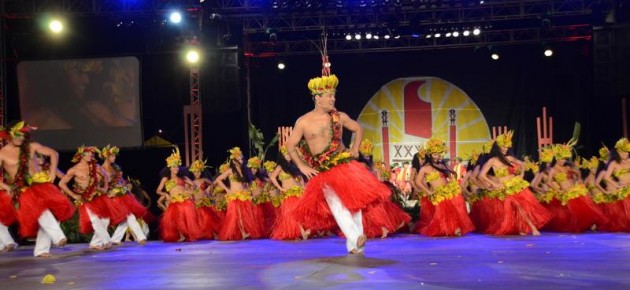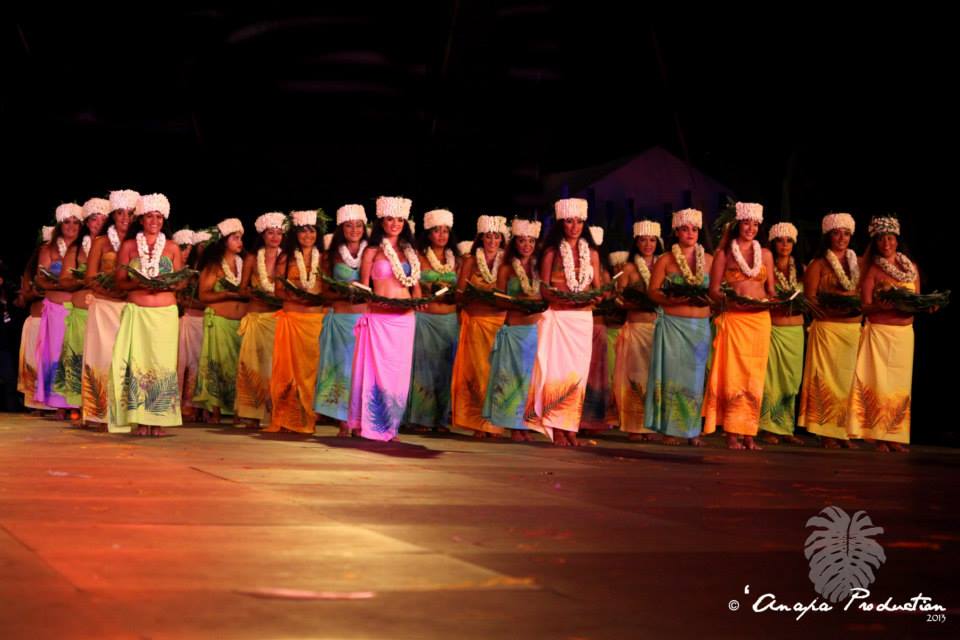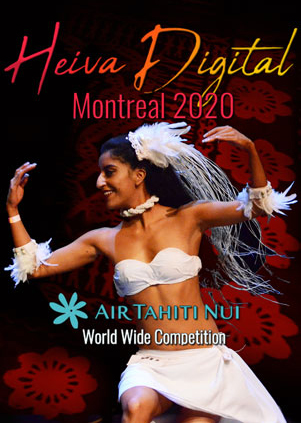The latest news from Heiva 2013
Heiva 2013 is drawing to a close
Two professional groups stood out brilliantly, and in fact, the final winners, as selected by the judges, caused no controversy. I agree with the judge’s decision this year which is not always the case.
All the results can be found here
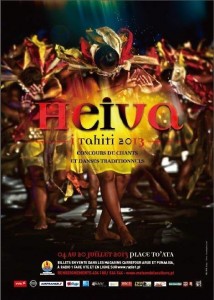 Ori i Tahiti took first place in the “hura ava tau” category, which used to be known as the “amateurs” category, and so they won the “Gilles Hollande” prize.
Ori i Tahiti took first place in the “hura ava tau” category, which used to be known as the “amateurs” category, and so they won the “Gilles Hollande” prize.
This category refers to those groups who have never won first prize in this category. The group that wins the “hura ava tau” category passes directly into the “hura tau” category in their next Heiva.
Ori i Tahiti put on a great show, whose theme honoured the values of Polynesian culture.
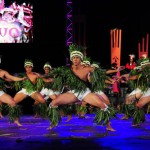 The two winners from the “hura tau” category are Hei Tahiti, who won first place and the “Madeleine Mou’a” prize, and Toakura who won second prize in the same category.
The two winners from the “hura tau” category are Hei Tahiti, who won first place and the “Madeleine Mou’a” prize, and Toakura who won second prize in the same category.
The two groups put on a fantastic show.
Hei Tahiti pulled off an impeccable performance with the legendary Tahiri vahine, who waved her magic fan to defeat those who wished to covet her land.
As we often see in the creations of Sandrine Trompette, the women were depicted as strong warriors, which goes against the sentimentality we are used to seeing at these shows. It was a superb performance that undeniably deserved to win first prize.
Toakura performed a particularly simple and well thought-out routine, written by Chantal Spitz who poetically put together a stage performance to represent the sacrosanct “Polynesian myth” which affirms the need to re-establish a link with the “echo of the ancestors”. Although the echo of the ancestors is not heard anymore, it does not imply that it has disappeared; it will always manifest itself in those who wish to listen… as exemplified by the Toakura dancers.
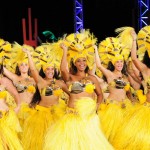 In the band category, prizes were won by the undeniable maestro of Polynesian percussion, Iriti Hoto, and his band Heikura Nui.
In the band category, prizes were won by the undeniable maestro of Polynesian percussion, Iriti Hoto, and his band Heikura Nui.
These honours would not be so surprising if it were not for the astonishing judges’ decision to not award the prize for the best male and female dancer this year. Something never before seen at Heiva!
It was announced by Marguerite Lai who is one of this year’s judges, director of the group O Tahiti E and multiple winner of the grand prize. The judges unanimously decided to not award the prize for best solo dancer this year. The argument being that the applicants were not adequately prepared for their performances.
 In fact Manouche Lehartel, president of the judges declared that “Ori Tahiti is not written in our DNA: reaching a good level is only achieved through hard work and practice”.
In fact Manouche Lehartel, president of the judges declared that “Ori Tahiti is not written in our DNA: reaching a good level is only achieved through hard work and practice”.
Marguerite Lai, who was interviewed at the evening award ceremony, said that the unanimous judges’ decision was made so as to promote the quality of dance performance. This decision has to be put into perspective given the recent rise in global popularity of Ori Tahiti: it is imperative that Tahitians continue to be the best at their art. In the future an average performance will not be enough to be awarded the first prize at Heiva.
It is worth remembering that the grand prize winner of the first international solo competition last December in Tahiti was won by an American from California. This came as a surprise to many of us.
Michele Chazeaux, journalist and honoured Heiva commentator recently declared that “in principle, groups put forward their best solo dancers for the competition”. The term “in principle” made some people grin.
It is important to stress that not all groups have the same attitude. Some groups such as Temaeva have a group vote to decide which member will be put forward as a competition candidate. In some groups the decision lies solely with their director, who may use some surprising criteria to make his/her decision.
Normally, save a few exceptions, the competition for the best solo dancer has never been a priority for groups. This means that it is open to those who choose it although now this may change, and perhaps we will not see the director’s half-brother’s cousin stage anymore!
This year I haven’t seen all of the candidates dance. Among those who I have been able to see, some were obviously great dancers, but then again, I have to point out that I have seen some steps that need a lot more work and a certain lack of creativity in some choreographies.







